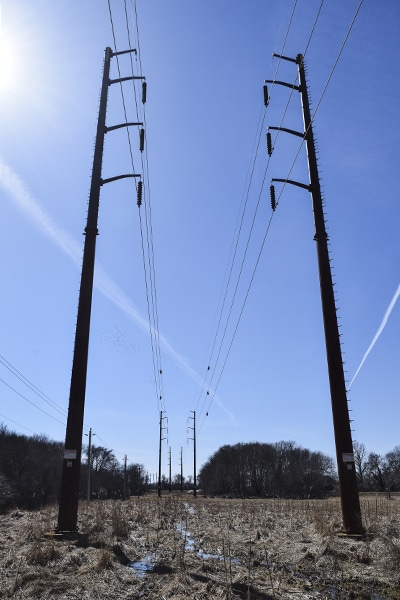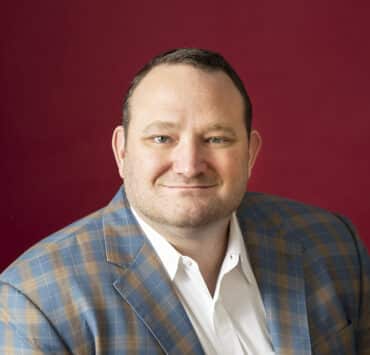|
Getting your Trinity Audio player ready...
|
Perhaps more than ever before, 2021 helped the public realize the essential nature of electric grids. In February, Texas endured a devastating power outage during inclement winter weather, leading to mass utility failure and water and food shortages. For Andrew Schneller, power usage—and the emergencies that affect it—were already top of mind.
Schneller is the director of New England’s complex construction at National Grid, the multinational electricity, natural gas, and clean energy delivery company serving more than 20 million people through its networks in New York, Massachusetts, and Rhode Island. He has been with the company for two decades, coming from a previous role in emergency planning, and manages the building and refurbishment of the components of electricity delivery that make the difference between the lights being on and off.
The aforementioned components are the towers and poles that carry the volts, substations, and more recently the housing for such things as municipal-scale batteries. Each of these things have to be built and configured to support the sources of generation, be resilient to climate change disruption, serve new and increasing demand points for electricity, and meet the company’s own decarbonization goals.
Schneller also has to be sure that his own crews, as well as those who are contract workers, go about building and repairing things in a safe manner. Safety is a core value of the company, especially when those company assets need repairs in the aftermath of a natural disaster.

“We have dealt with Nor’easters, hurricanes, and tornadoes—and now COVID,” says Schneller, referencing how the pandemic meant operating with reduced crews, while electricity demand saw no reduction. A natural disaster that affects the grid might mean his crews are taken off of construction projects and redeployed to repairs and restoration of service.
With the arrival of the coronavirus, there were several questions: What if all or most of his workers were out sick? Could outages affect people on ventilators? In the early stages of the pandemic, the team had daily discussions on minimizing risks to people, employees, and customers, while also maintaining service.
And while cybersecurity is a concern with all public utilities and handled by a different unit, Schneller and his teams build to ensure uninterrupted energy supply to customers that are dependent on the physical features of National Grid. Those include fences, security cameras, electronic employee check-in/out systems, and making sure all assets are hardened to malevolent attacks of any kind. This adds to building against natural disasters such as floods and windstorms—accomplished by keeping transmission lines and substations above flood levels, installing wind-tolerant transmission towers, and trimming trees back from power lines.
Considering how climate change is the root problem of many natural disasters, National Grid has a plan to reduce greenhouse gas emissions through the implementation of “Net Zero by 2050.” The plan directly affects construction projects under Schneller’s direction. They don’t build the wind farms, but the locations of those renewable energy generators mean building new transmission lines.
“This has been a major business driver for us over the last decade, and an opportunity to grow as a company, but most importantly, it’s been an opportunity to create a better environment and tomorrow for our customers and communities,” says Schneller, adding that combating climate change is critical to National Grid simply because it’s the right thing to do. “We’ve upgraded our substations, lines, and distribution.” And due to the nature of renewable energy, with variable outputs depending on the wind blowing and the sun shining, battery storage facilities have to be factored into the grid matrix as well.

Dynamics at the receiving (customer) end drive many of the company’s construction projects. For example, a casino in Massachusetts opened in 2019, creating a significant amount of demand on the grid. During the five years the casino was in development, Schneller’s group concurrently built a substation to handle the load. In other projects, the company upgraded substations and built battery stations for resort communities—Aquidneck, Nantucket, and Block Island—on islands off the Rhode Island and Massachusetts coasts, where demand rises sharply in summer months.
The demand for clean electricity is on a steady growth trajectory, in the northeast and elsewhere. Schneller says we are only in the early stages of that as the push to replace combustion (fossil fuel) vehicles with those powered by electricity is accelerating. JP Morgan Research projects that plug-in electric vehicles will account for 12 percent of all new vehicle sales by 2025, and 20 percent by 2030. That means a lot more electric transmission capacity will be needed, and soon.
Schneller believes his crew is up to the task. The majority of the people under his charge (257 employees plus another 300 to 500 contractors at any given time) are unionized, a factor he values because the skills and training they bring to the job are up to date with the most current technologies. With so much emphasis on next-generation efficiencies, resiliency, and sustainability, National Grid—and its customers—require it.


